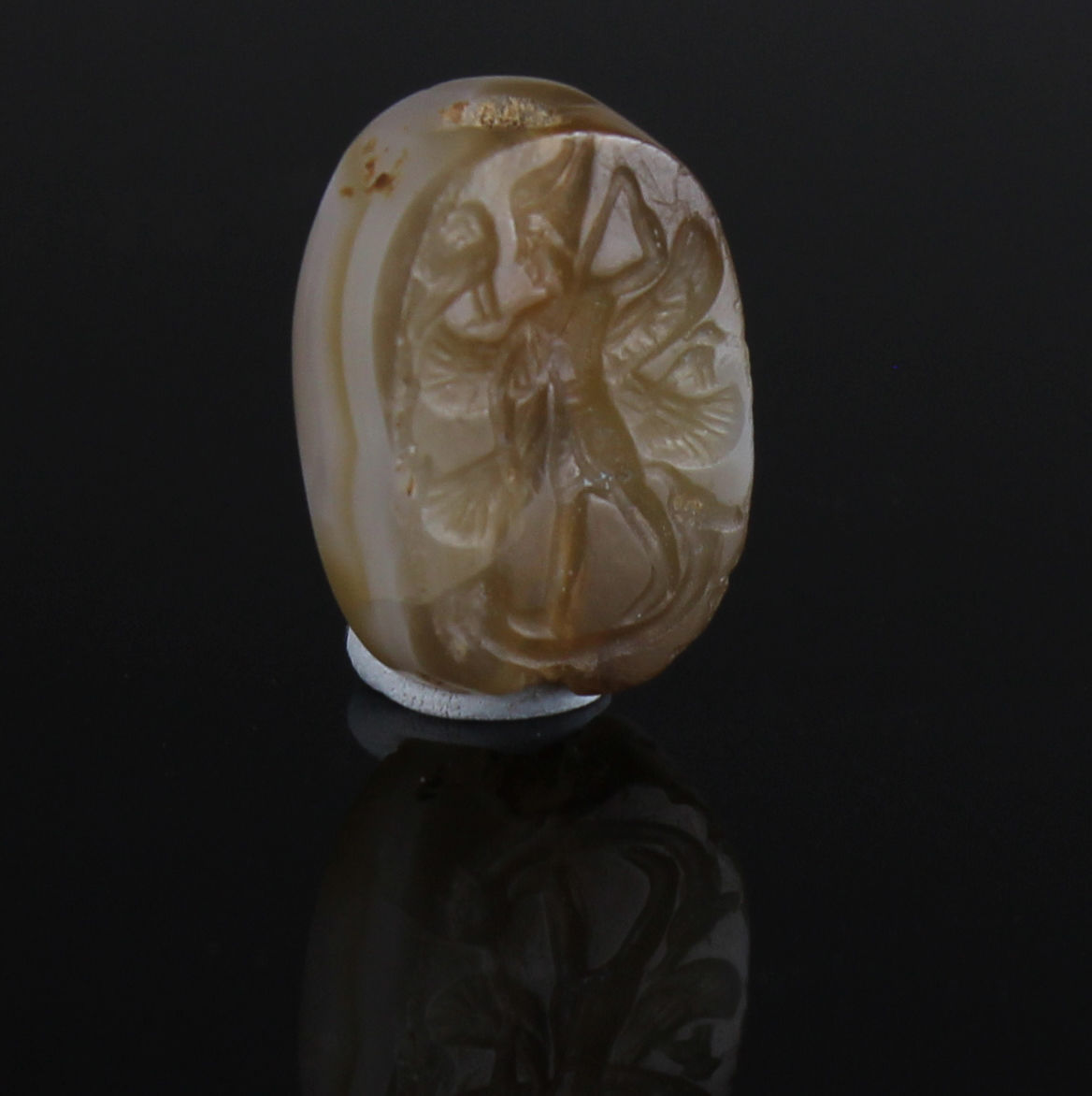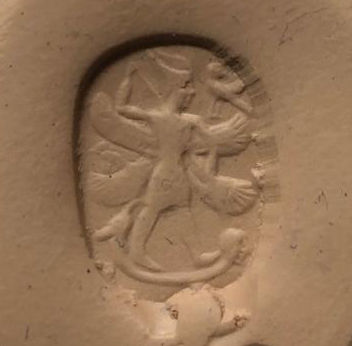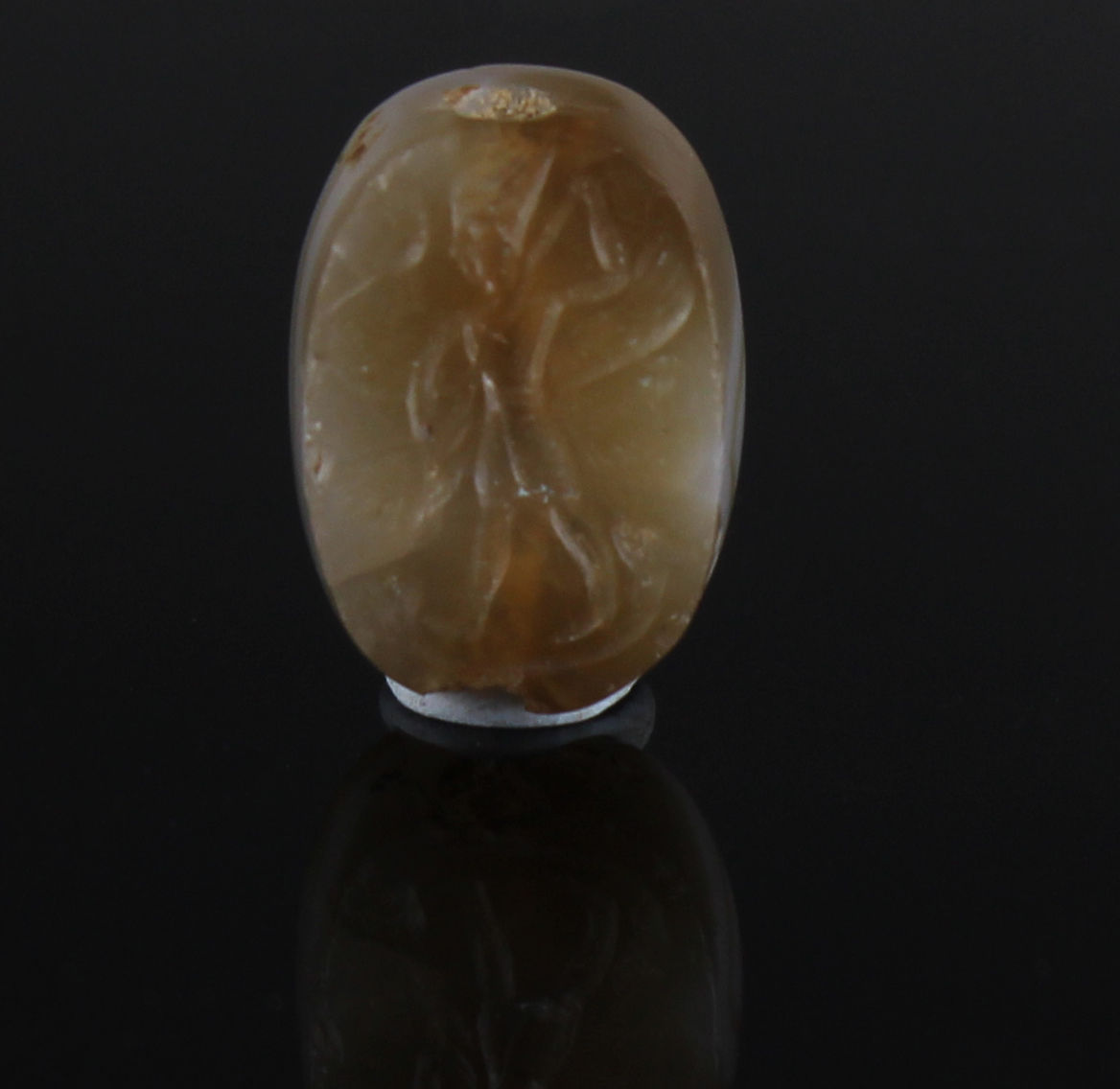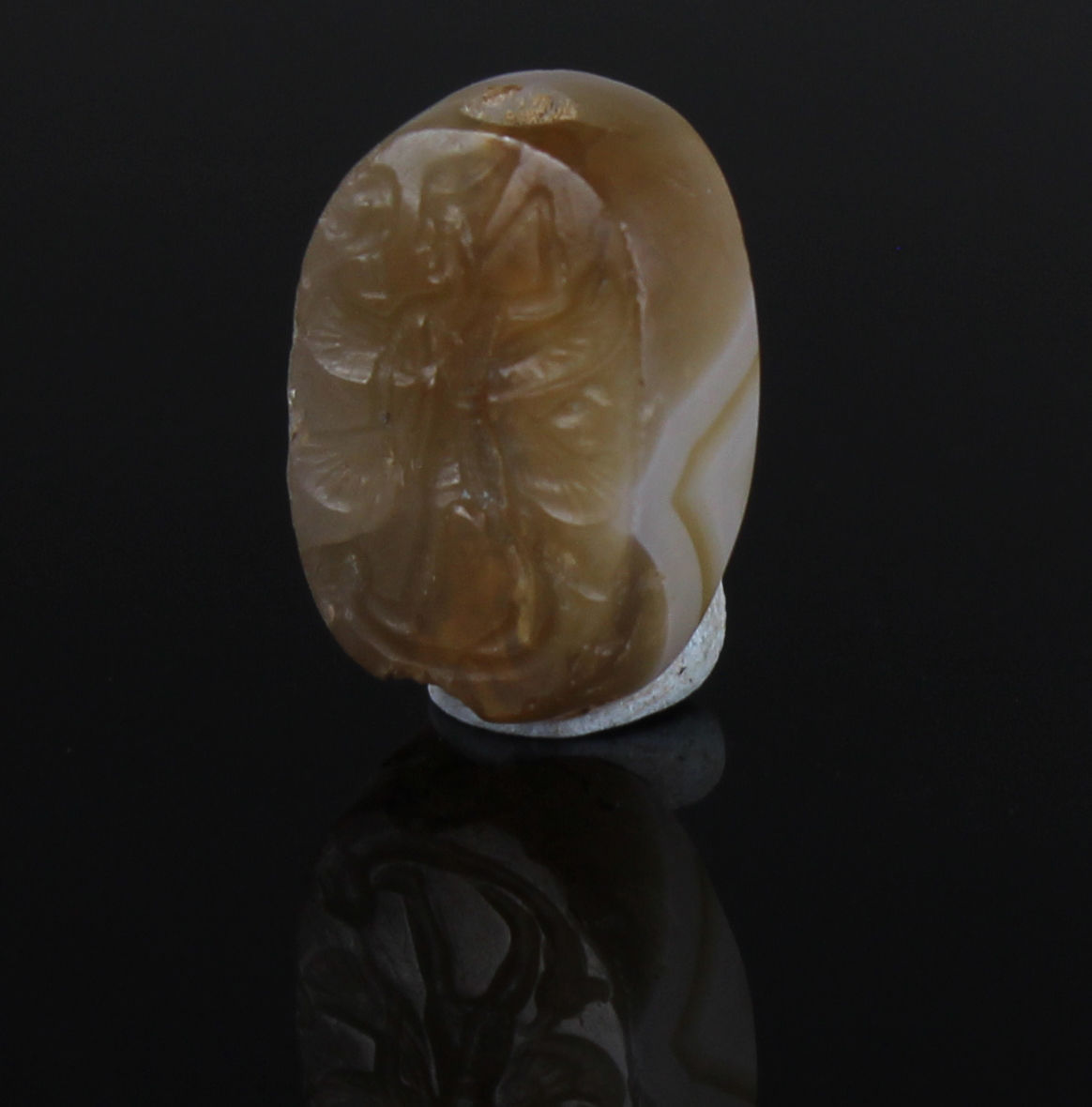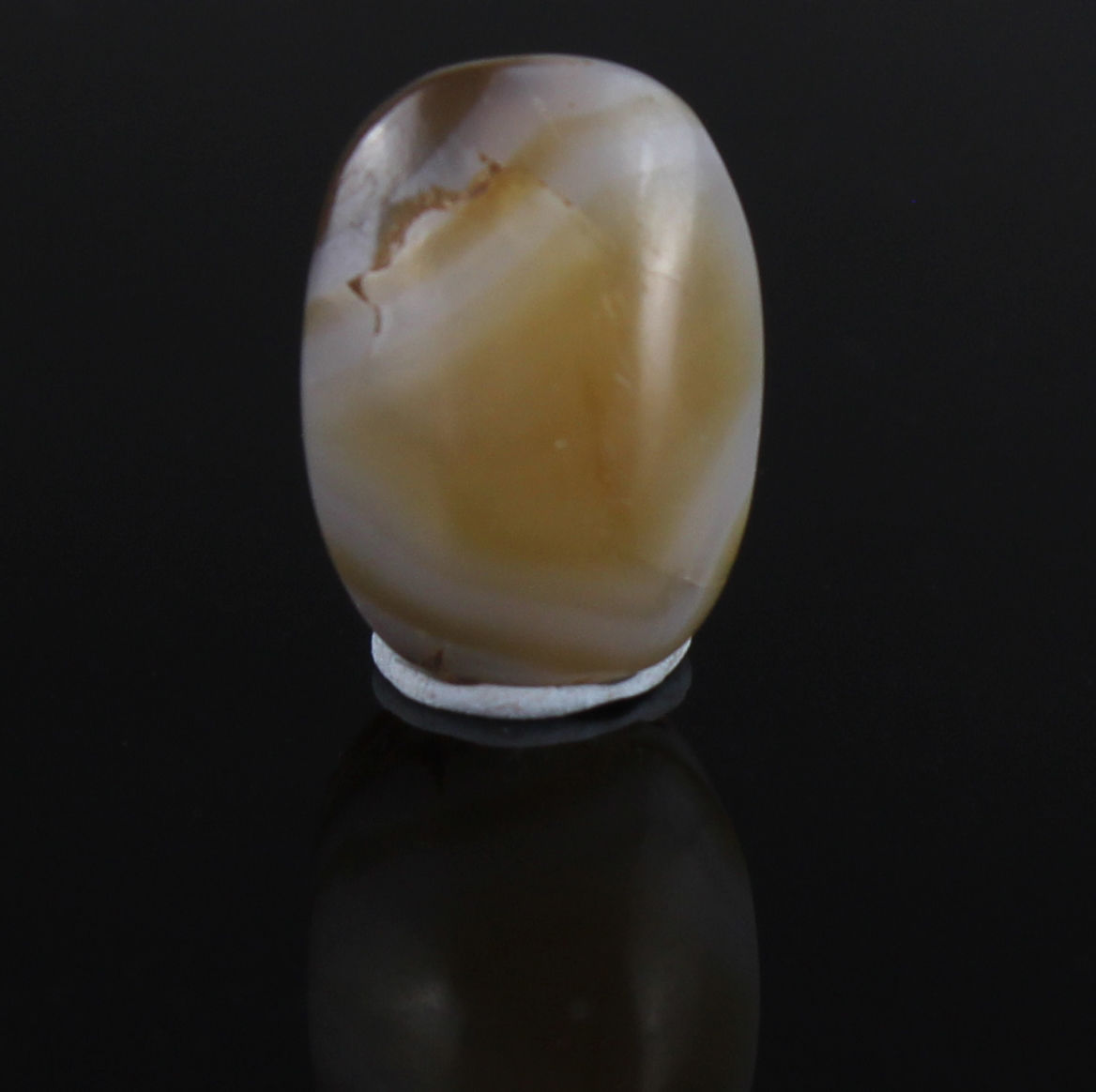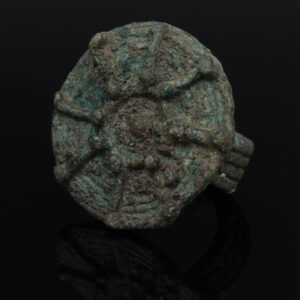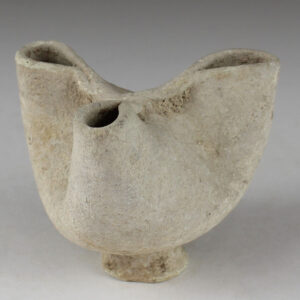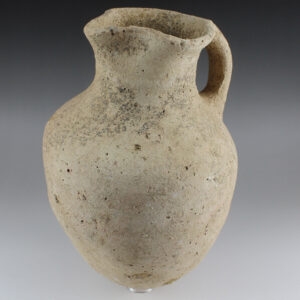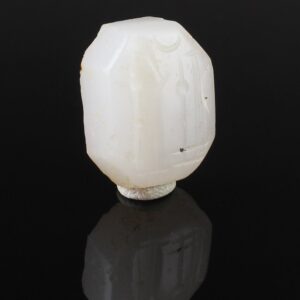Description
| ITEM | Seal depicting the god Chemosh dressed in the Egyptian style |
| MATERIAL | Agate |
| CULTURE | Iron Age, Moabite |
| PERIOD | 7th – 6th Century B.C |
| DIMENSIONS | 16 mm x 11 mm |
| CONDITION | Good condition |
| PROVENANCE | Ex Museum Exhibiton of the Arbeitsgruppe für Biblische Archäologie, Germany (Deaccession) |
In ancient times the land of Moab comprised the narrow strip of cultivable land on the Transjordanian Plateau east of the Dead Sea, between the escarpment and the Arabian Desert. This was an area about twenty-five kilometers wide and, during its periods of greatest strength, about ninety kilometers long, stretching the length of the Dead Sea. The main Moabite plateau extended from the Wādī al-Ḥesā (the biblical river Zered) at the south end of the Dead Sea to the Wādī el-Mūjib (the biblical river Arnon) at the midpoint. The northern portion of Moab from the Wādī el-Mūjib up to around Tell Ḥesbān (biblical Heshbon), however, was historically not as secure and seems to have been open to incursion, a fact that is illustrated by the Moabite Inscription (MI), the largest preserved Moabite text. Not many details are known about Moabite history, but Moab as an independent kingdom probably arose in the last centuries of the second millennium bce and disintegrated in the mid–first millennium bce (that is, c. 1300–600 bce), falling first to the Assyrians and then to subsequent conquerors.
The Moabite religion seems to have shared several features with that of other Iron Age kingdoms in the region, such as Israel, Edom, and Ammon, and all of them probably inherited much from their Bronze Age “Canaanite” predecessors. However, while it used to be commonplace to claim that all four kingdoms had their own national god (Kemosh for Moab, Yahweh for Israel, Qaws for Edom, and Milkom for Ammon), it is perhaps better to be more cautious in view of the meager evidence outside the Bible. At any rate, the MI shows that King Mesha of the Moabites worshipped a patron deity (Kemosh), in whose name Mesha conducted warfare, made sacrifices, and consecrated sanctuaries and even the peoples he had defeated (compare the biblical ḥerem, or “sacred ban”). The Moabite religion probably slowly disappeared as new religions such as that of the Nabateans entered the region at the end of the first millennium bce.
Kemosh (or Chemosh) was presumably the chief deity of the Moabites, although they doubtless worshipped other gods as well. Kemosh is known from earlier times in Syria-Palestine.


